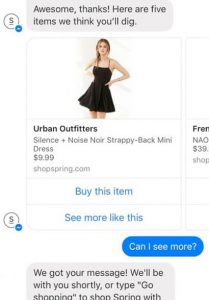Digital marketers constantly look for ways to improve the effectiveness of their campaigns. As a top converting tactic for most digital campaigns, retargeting audiences can be implemented across multiple channels: display, PPC, email, and social. And because retargeting is an omni-channel tactic, marketers are putting additional resources including creative development and media budget to improve conversion rate. At the end of 2014, it was reported that over 71% of marketers spend between 10-50% of their budget on retargeting and growing.
It’s also pretty easy to get a retargeting audience set up. Even after just a few weeks of having a cookie placed you can build a substantial target audience to re-message. But be sure to avoid the set-it-and-forget-it mistake many marketers make. If your retargeting campaigns are not getting the proper attention and optimizations, then you could be missing out on efficient conversions and sales.
In this blog post, I want to focus on retargeting optimizations. Here are my top 5 retargeting tips to help rev up your campaigns for optimal performance.
1. Segment Visitors
Building an initial retargeting pool is pretty cut and dry. You place a pixel across your entire site and then launch your campaign. This strategy is fine to get a campaign launched: you need a certain volume of unique visitors on your website to build an audience that can be placed into a retargeting pool. After a few weeks or months (depending on site traffic) of collecting unique visitors, start segmenting out your audience based on their level of engagement, content they viewed, or even a lead gen tactic such as filling out a form or making a phone call to your business.
Questions to keep in mind: Did they visit specific product pages, the blog, or even download a white paper? Did they provide an email address or phone number? Did they go so far as to call you or request more information? Segment out these audiences by their interests so that you can proceed with the following optimization tips.
2. Build Separate Campaigns
Now that you’ve segmented your audience, put them into unique campaigns. The main reason behind this is so you can allocate budget based on each campaigns’ individual performance.
For example, did the people who downloaded a white paper complete more macro conversions (resulting in revenue) than the people who only visited your homepage (and took no further action)? The answer is most likely yes and, if so, ensure you don’t cap out on budget for your most engaged audience with the highest conversion rate.
Another great way to segment your audience is into ‘converters’ and ‘non-converters’. Keeping in mind that you can even segment down to the level of people who called versus not called or people who filled out a form versus not. This will give you the opportunity to really tailor your next message to them which brings me to my next tip.
3. Strong and Frequent Messaging
Now that you’ve segmented your audience, you know which message they’ve seen at least once. These audience members are aware of your brand. They’re in a retargeting pool after all, and you’ve included them in separate campaigns based on their activity with your brand.
This is the time to use your second, third, fourth, and ongoing interactions to provide them with strong and unique messages. With each interaction you can test out robust content with stronger calls to action.
4. Modify Bids
Similar to tip #2, you want to segment your audience so you can adjust bids accordingly. Your bid will be higher for a retargeting pool, but consider the different ways you can segment your audience for bid modifiers – such as the number of times you’ve interacted with this audience. Every interaction gets you closer to a sale, so you want to ensure you have bid modifiers depending on which stage of the purchase process your audience is at. Especially since your messaging gets stronger.
Basically, in the nicest and most helpful way possible, you want to keep your brand in front of these engaged audiences at all times.
5. Report and Analyze
I’m a broken record when it comes to this tip because every single one of my blog posts drives this point home – report and analyze. At a minimum you need to keep track of your data and continuously pull reports on a bi-weekly basis. If one of your messages isn’t working, then adjust. You need to know this quickly so you don’t waste budget.
Test and analyze what’s working and what isn’t working. And remember: every test will have a loser. It’s just as important to find what isn’t working as it is to find what is working. You can take these insights and apply them across other campaigns.
Digital & Social Articles on Business 2 Community(10)



